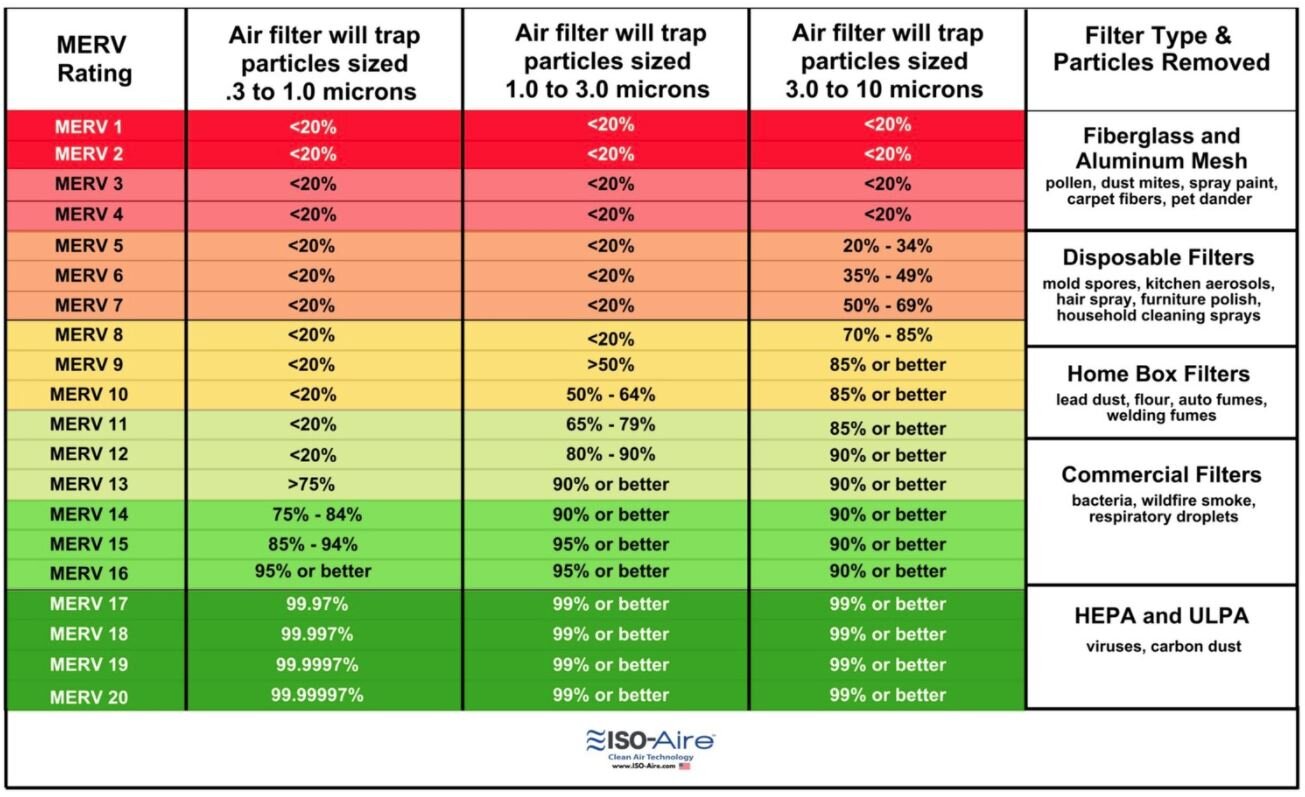What is a MERV Rating and How Does It Compare with HEPAs?
In the world of indoor air quality (IAQ) solutions, both MERV and HEPA are two types of air filters that have garnered our attention particularly during the COVID-19 pandemic. Because the SARS-CoV-2 virus is spread primarily through an aerosolized route, the risk of transmission is heightened indoors. The Centers for Disease and Control (CDC) recommends proper ventilation as a mitigation strategy to protect building occupants from invisible airborne threats. That’s where HEPA and MERV filters come in.
ISO-Aire floor-set models are engineered with both a pre-filter and a 12-inch deep HEPA to help capture 99.99% of airborne pathogens and contaminants.
Commercial-grade air purification manufacturers like ISO-Aire, that offer a HEPA air purification system, are often asked about MERV filters. Individuals are curious as to how higher MERV filters may help reduce a risk of infection. MERV stands for “minimum efficiency reporting value” and an air filter receives a MERV rating as determined by the American Society of Heating, Refrigeration, and Air-Conditioning Engineers (ASHRAE). Both ASHRAE and the CDC have released COVID-19 guidelines for buildings, and both recommend that HVAC systems should have filters rated at a MERV 13 or higher.
ISO-Aire developer Kevin Albers describes the difference between a MERV filter and a HEPA filter in this short video.
The next question to ask is whether or not a MERV 13 offers adequate protection? A MERV 13 filter traps at its minimum efficiency - less than 75% of air particles that are 0.3-1.0 micron in size (reference chart below). Increasing the air particle size range to 3-10 microns, a MERV 13 filter will catch 90% or more of them while at its worst. So, an upgrade to a MERV 13 is a step in the right direction, but is it enough?
This chart illustrates various MERV filter ratings from 1 to 20. See how effective HEPA filters compare (darker green shaded area) at effectively capturing microscopic airborne particulates to ensure a safe, healthy indoor space for occupants.
Here’s where HEPA (high efficiency particulate air) filters come in. A HEPA is the creme de la creme of air filters with an equivalent rating of a MERV 17 or higher. A HEPA filter at a MERV 17 rating will trap 99.97% of air particles that are 0.3 microns in size, but capture an even higher percentage of particles smaller or larger than that size. This is because the 0.3 micron size particle is the hardest particle size to catch, hence why they test HEPAs at this particle size. This is much better than a MERV 13, and this is the at the lowest efficiency of a HEPA.
Given the threat of COVID-19 airborne transmission, upgrading to a HEPA is far more effective considering it captures microscopic virus particles (0.06-0.12 microns). Furthermore, because of the logistical issues and high cost of installing a higher MERV (such as MERV 13) filter into the existing HVAC system, the CDC and ASHRAE both recommend adding portable, commercial-grade HEPA air purifiers with the appropriate ACH (air change per hour) for the space.
What are the top three factors to consider in choosing a HEPA filter? We have the answers.
At ISO-Aire, our quiet, convenient and portable purifiers safeguard spaces of all sizes - from classrooms and daycare centers to city halls and sports centers - with medical-grade HEPA protection. The plug-and-play application avoids costly redesign of a building’s current HVAC system and our stand-alone unit does not require ductwork retrofits. The 12-inch deep HEPA filters engineered inside our ISO-Aire floor-set models are 99.99% effective or better at trapping contaminants and ultimately provide the highest level of safety. In addition, ISO-Aire offers two additional layers of proven clean air technology. Customers can choose to add ozone-free bipolar ionization, which helps to combine smaller air particles into larger sizes. Another optional proven technology is ultraviolet-C germicidal (UVC) irradiation which destroys viral DNA as it passes through the unit.
An investment in a commercial-grade air purifier equipped with powerful and proven HEPA filtration will go a long way towards providing peace of mind for your team or community, customers or patients. For more information, check out our blogs on bipolar ionization and UVC. And, watch our video on the top 3 considerations when choosing a HEPA filter. Contact us with any questions at 651-265-0605 or at info@ISO-Aire.com. Our experts enjoy talking in depth about MERV vs. HEPAs!




